iMore Verdict
Bottom line: Keychron K4v2 is a 96% layout mechanical keyboard, so you get the full functionality of a 100% board, but in a more compact form factor. It is compatible with Mac, Windows, Android, and iOS. You can choose from white or RGB lighting, plastic or aluminum frame, Gateron Red, Brown, or Blue switches, and there's a hot-swappable option. The K4v2 can be used wirelessly via Bluetooth or with the included cable. It uses USB-C to charge and has a battery life between 68-240 hours.
Pros
- +
Full-size functionality with compact layout
- +
Hot-swappable option
- +
Choice of white or RGB backlighting
- +
Multiple switch options
- +
Multi-device compatibility with Bluetooth connectivity
- +
Inclined bottom with kickstand
Cons
- -
High body (may need wrist rest)
- -
No software to customize keys
- -
Layout takes some getting used to
- -
Default ABS keycaps get shiny quickly
You can always trust iMore.
In the past year, I picked up quite an addictive little hobby: mechanical keyboards. I've said it before, but keyboards are pretty subjective, as we all have our own preferences, but I like to feel and hear my typing while I work. I have a few recommendations for the best mechanical keyboards for Mac, and honestly, for me, it all started when I got a Keychron K2.
However, while the Keychron K2 works great for me as a daily driver, it's a 75% Ten Key Less (TKL) layout, and that's not going to work for everyone. I know that a lot of people actually need a number pad for data entry and whatnot, so a full 100% keyboard is the best fit. However, full-size keyboards are fairly big and take up a lot of space on a desk. Keychron's K4v2 is a 96% mechanical keyboard, so it offers full functionality in a more compact size. Even though it may not seem like much, it really does make a difference on a desk, especially smaller ones.
For this review, I have been testing the Keychron K4 (Version 2) hot-swappable with RGB backlighting, aluminum frame, and Gateron Red (linear) switches. You can get the K4v2 with just white backlighting, plastic body, and no hot-swap for less. The aluminum frame option is only available with RGB lighting.
Compact with all necessities
Keychron K4v2 review: What I like
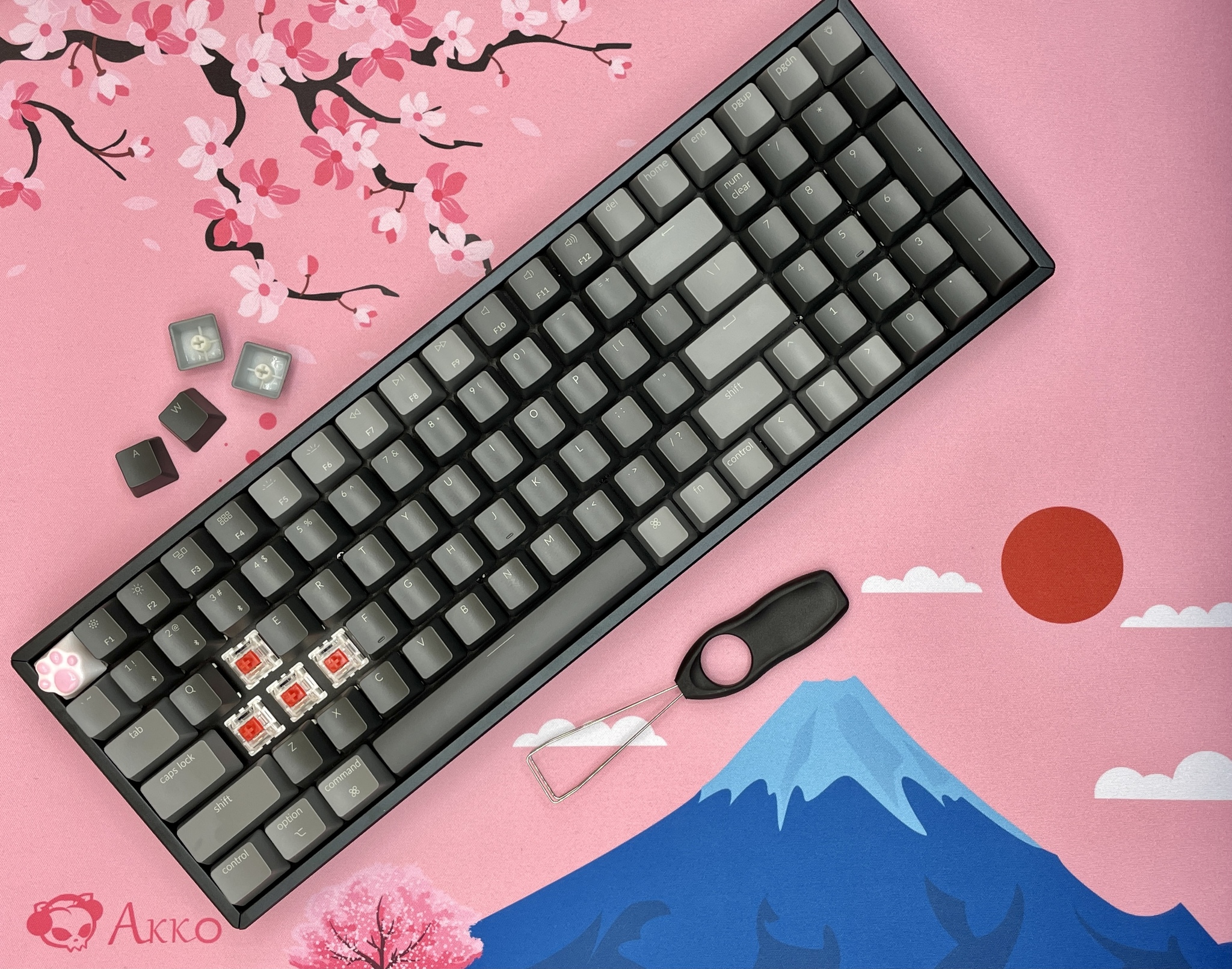
Before I dived into the world of mechanical keyboards, I often thought that full size was the way to go. However, once I got a Keychron K2 and checked out the mechanical keyboard rabbit hole, I discovered that quite a lot of people prefer smaller keyboards, myself included. But one thing that I could never give up is functionality, and while smaller keyboards can use layers to maximize efficiency, I find that they often hinder my productivity and workflow.
The Keychron K4v2 gives you all of the functionality of a traditional, full-size keyboard (100%) but shrinks it down into a 96% form factor. While that 4% doesn't seem like a lot, if you have a smaller desk, every little bit counts. You get a 10-key number pad on the right side of the keyboard, but since it's 96%, placement is right next to the rest of the keys — there are no empty spaces. Keychron was able to maximize the space, but I admit, this format does take a little bit of getting used to (I've made more typos in the first few days with this keyboard than I have normally with my K2). I don't use the number pad as often as others, but it is very handy when I do need to input a lot of numbers.
Like other Keychron boards, the K4v2 gives you plenty of options. I prefer having RGB in my keyboards, and the K4v2 has 15 different lighting effects that you can cycle through with the light button. If you prefer just a white LED or no backlighting at all, you can turn the backlight off or change it to a solid white color. The white backlight option for the K4v2 is only available with the plastic body — if you want the aluminum frame (more hefty and premium feel), then you'll have to change the RGB backlight to a solid white.
iMore offers spot-on advice and guidance from our team of experts, with decades of Apple device experience to lean on. Learn more with iMore!

For my K4v2, I opted to get the Gateron Red switches (my K2 had Gateron Browns), which are linear and quiet. There is no real "bump" with the Reds, as you would get with the Browns or Blues. They are also the quietest switch that Keychron offers for the K4, so if you need a keyboard that won't annoy anyone within the vicinity (or on Zoom calls), then Gateron Reds are probably what you want.
The Gateron Reds require only 45±15gf of actuation force and have a pre-travel distance of 2±0.6mm, so you don't need to press them down much before the keystroke registers. To compare them with the other switches, Gateron Browns need 55±15gf of actuation force and pre-travel of 2±0.6mm, while Gateron Blues have an actuation force of 60±15gf and pre-travel distance of 2.3±0.6mm. Reds are classified mostly for gaming first because of the fast response time, but they are also suitable for office work due to the quiet noise level.
One of my favorite things about the Keychron K4v2 is that it is hot-swappable. This means that you can further customize your K4 by changing out the switches entirely if you do not like them; no soldering required. For the hot-swap version, it's compatible with almost all MX style 3-pin and 5-pin mechanical switches on the market, including Gateron, Kailh, and more. I originally opted for the Gateron Reds on my K4 to try them out, as my other board has Browns. However, I'm honestly not a big fan of the Reds so far, so I plan on changing out the switches at some point. Having the hot-swap option makes this process easier since you just pull the switches out and pop the new ones in.
I've learned from the past few months that it is hard to find a good mechanical keyboard that also has Bluetooth wireless connectivity and works with Mac out-of-the-box. The K4v2 ticks off all the right boxes. It uses a braided nylon USB-C cable that you use to charge and plug into your computer. A full charge is about three hours, and a full battery should last between 68-72 hours, depending on if you're using a single LED or RGB backlighting. Without lighting, the keyboard can last up to 240 hours. Actual results may vary depending on your usage. I honestly prefer to just keep it plugged in all the time, which does not harm the battery. The K4v2, like the K2v2, can pair with up to three devices.
I also prefer to have my keyboards at an angle when typing, as it is more comfortable (especially with a wrist rest). The K4v2 has an inclined bottom frame, and there are two sizes of kickstand feet on the bottom to give you additional typing angles.
Those default keycaps get shiny quick
Keychron K4v2 review: What I don't like
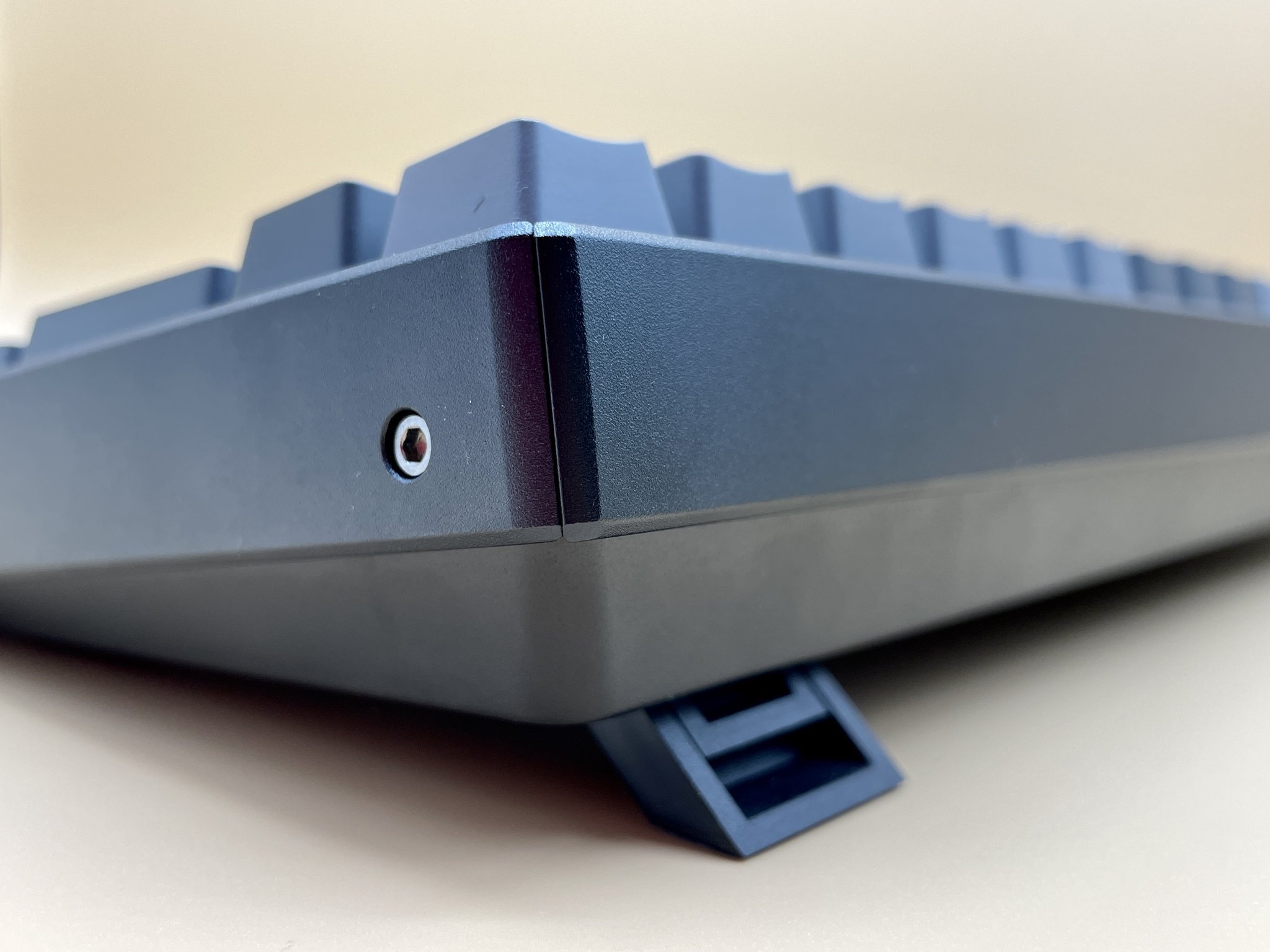
One of the biggest complaints about Keychron boards that I have heard from others is that they're pretty high, which may lead to discomfort when typing for extended periods. I didn't like using my K2 without a wrist rest, so I recommend one for the K4v2 as well. Keychron sells a wooden wrist rest to go with the K4, but you can also use whatever you can get your hands on, as long as it's around a similar size: 371-by-124-by-38mm for plastic, or 376-by-129-by-38mm for the aluminum frame version.
I'm also not sure if it's the Gateron Red switches that I'm using or the 96% layout in general, but I have noticed I have made more typos in the first few days with the K4v2 as compared to my K2v2. Since the 96% layout crams the number pad next to the rest of the keyboard, there is a small learning curve — I am often pressing the wrong keys because I'm used to the 75% layout. The Gateron Reds also feel way too easy to press, leading to more typos as I write. Thankfully, this is hot-swappable, and I plan to buy some more tactile switches to install on this later on, as that's what I seem to prefer.
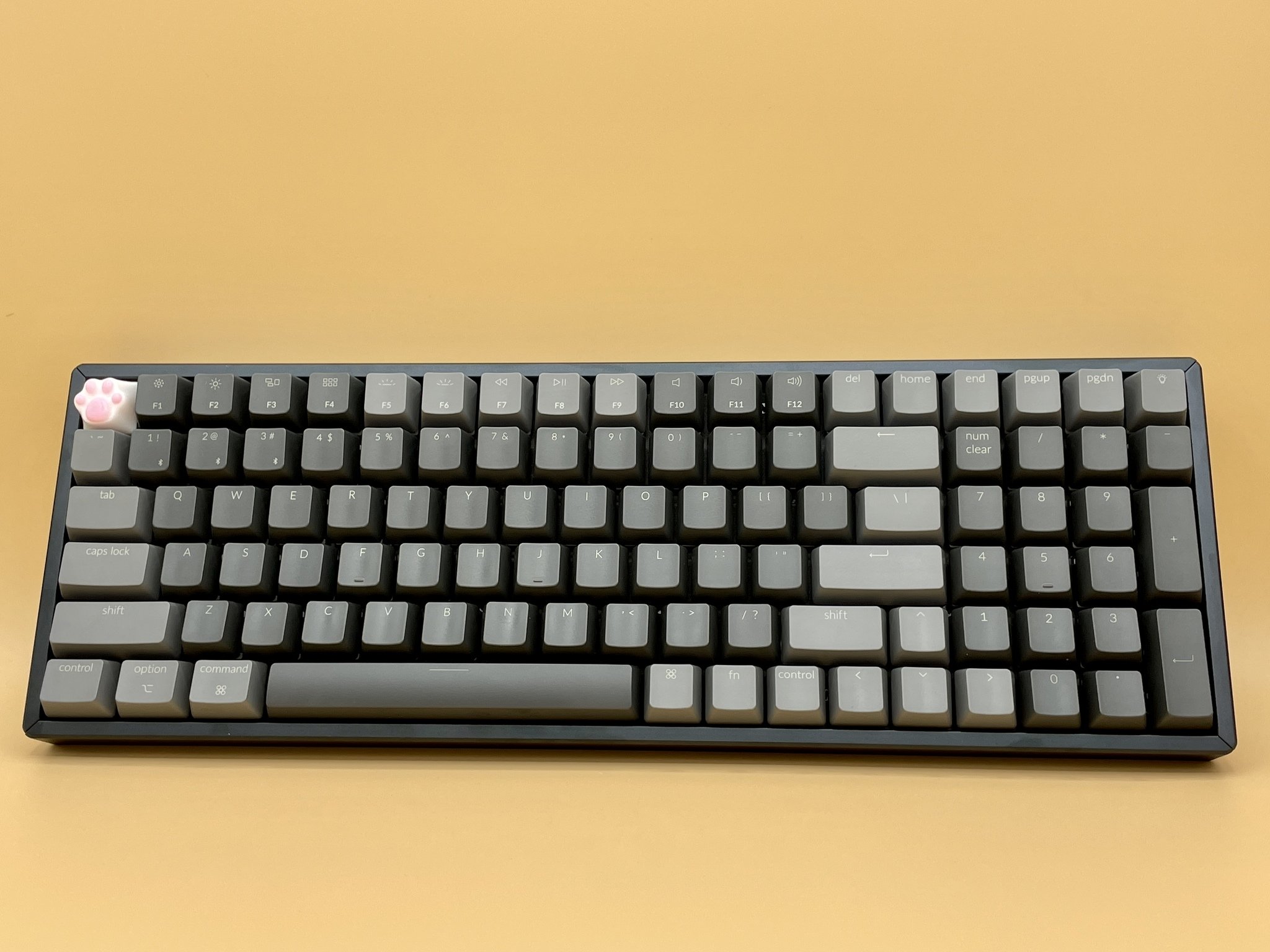
My biggest gripe with the K4v2 are the keycaps that it ships with — they're ABS plastic, and it doesn't appear to be double shot either. This means that the plastic is a little thinner, and the tops are smooth with no texture like PBT sets that I've purchased. The default K4v2 keycaps will get shiny quickly, which means it won't take long before they get worn out, and you'll need to replace the keycaps. I plan to replace these keycaps as soon as some of the group buy keycap sets I have purchased come in.
While there isn't really a need for it with the K4, Keychron doesn't have software that lets you customize individual keys, lighting effects, or even macros.
The competition

Since the Keychron K4v2 is a 96% keyboard, it's fairly unique in terms of size. However, if you are looking for a full-size keyboard, I reviewed the Das Keyboard 4 Professional for Mac, which could be a good contender if that's what you're seeking. This is a full-size board that is best suited for office environments, and it comes with Cherry MX Brown or Blue switches. There is also a volume knob with dedicated media control keys for convenience, as well as an integrated USB hub. Unfortunately, I didn't care too much for it because it doesn't have backlighting of any kind, but if you don't need lighting and want a full size, then the Das Keyboard 4 Professional is a decent option, though it's a little pricey compared to the K4v2.
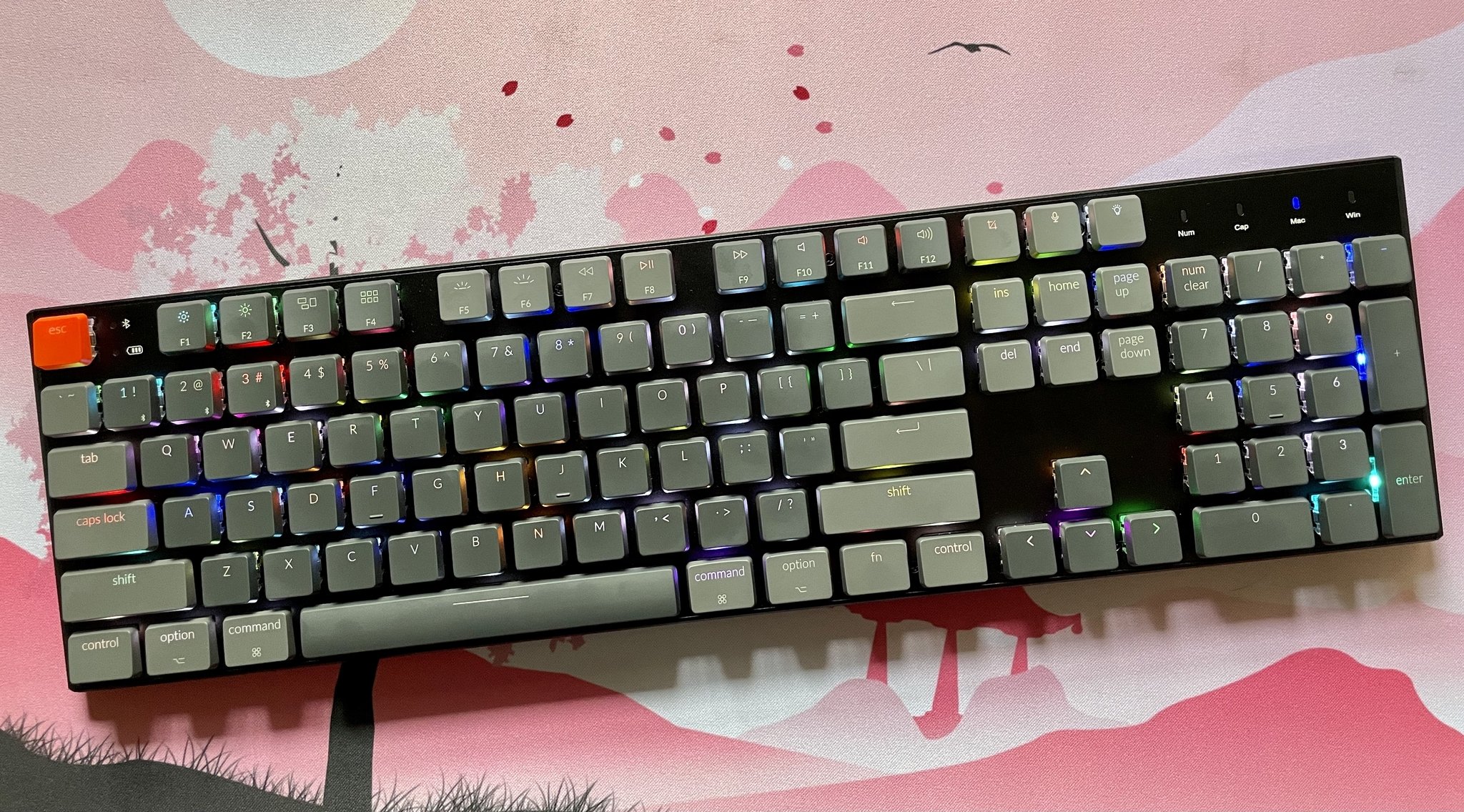
Another good option for a full-size board is Keychron's K1v4, which I gave a 4-star rating in my Keychron K1v4 review. This is a low-profile style board, so it's more like a hybrid between an Apple Magic Keyboard and a mechanical. It comes in an 87-key TKL size or full 104-key size, has white or RGB backlighting options, and you get to choose between Gateron Low Profile Red, Blue, or Brown switches. This is a good board to consider if you want full size but aren't satisfied with Apple's keyboard and want something with a little more tactility and choice.
Keychron K4v2 review: Should you buy
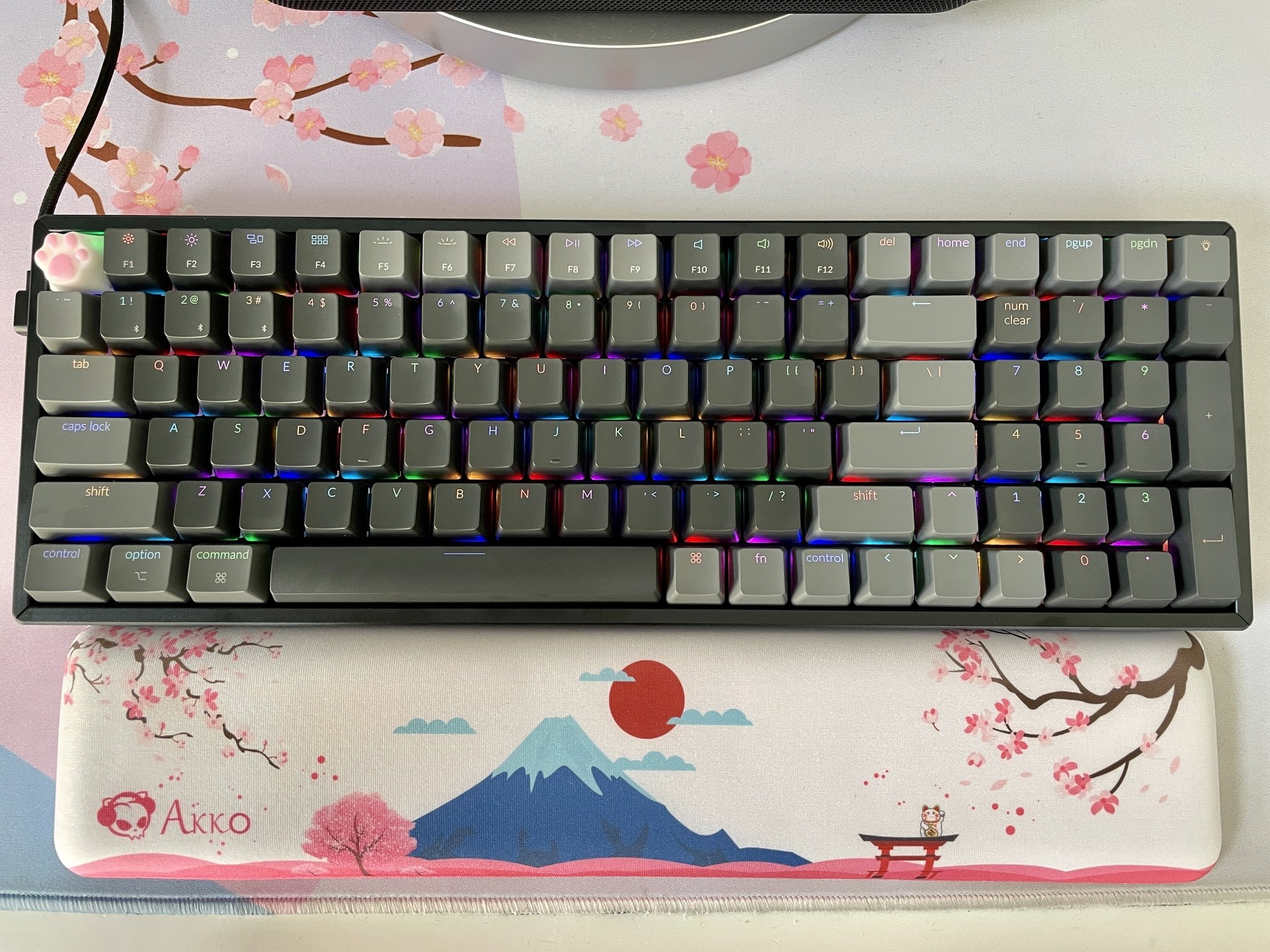
You should buy this if ...
You want full-size functionality in a smaller package
The Keychron K4v2 packs in a full-size keyboard into a more compact 96% form factor. You'll be getting all of the functionality you need from a 100% board, but with more room left to spare on your desk for your mouse and other peripherals.
You want a wireless mechanical keyboard that works with Mac
One of the strongest selling points of Keychron is that its keyboards are all designed to work out-of-the-box with Mac and iOS, though you can also use them with Windows and Android if you need to. It also has Bluetooth wireless connectivity, which can be hard to find in a good mechanical keyboard.
You want the ability to customize
Mechanical keyboards are all about customization and flexibility, and the K4v2 offers exactly that. You have the choice of the plastic body or aluminum frame, white or RGB backlighting, and Gateron Red, Blue, or Brown switches. Since the K4v2 has a hot-swap option, you can change out the switches for a different typing experience later on. But if you don't want or need to change out the switches, there's also a non-hot-swap version. Gateron switches are also compatible with any keycaps out there that fit on Cherry MX stems (+ shape).
You should not buy this if ...
You don't need a number pad
If you can live without a number pad, then you should look into some of the other Keychron boards, like the K2v2 (my current favorite), K6 (65% format, no function key row), or even the K8 (80% TKL layout).
You don't need backlighting
A lot of mechanical keyboard folks like to have backlighting, whether just white or RGB, because it makes typing away at night easier (not everyone is a touch typist). But if you don't care for keyboard lighting at all, then the Keychron K4v2 (and other Keychron boards) may not be for you.
You don't like mechanical keyboards
Again, keyboards are subjective. If you don't really care for mechanical keyboards and prefer chiclet-style boards like Apple's Magic Keyboard and similar alternatives, then the Keychron K4v2 won't be for you.
If you're someone who wants to get into mechanical keyboards and needs something with a number pad but still want to save some desk space, then the Keychron K4v2 is a great option to consider. It gives you the functionality of a full size 100% keyboard but with a smaller footprint, which is always welcome, especially on smaller desks. Plus, it has the option for hot-swap, three choices of Gateron switches, white or RGB backlighting, and plastic or aluminum frame.
However, the 96% form factor does require some time to get used to, so if you're familiar with other layouts, you may make more typos than usual in the first few days. The default keycaps are ABS plastic, which gets shiny quickly, so you'll want to look into getting a better set of keycaps for this board eventually (I recommend PBT double shot).
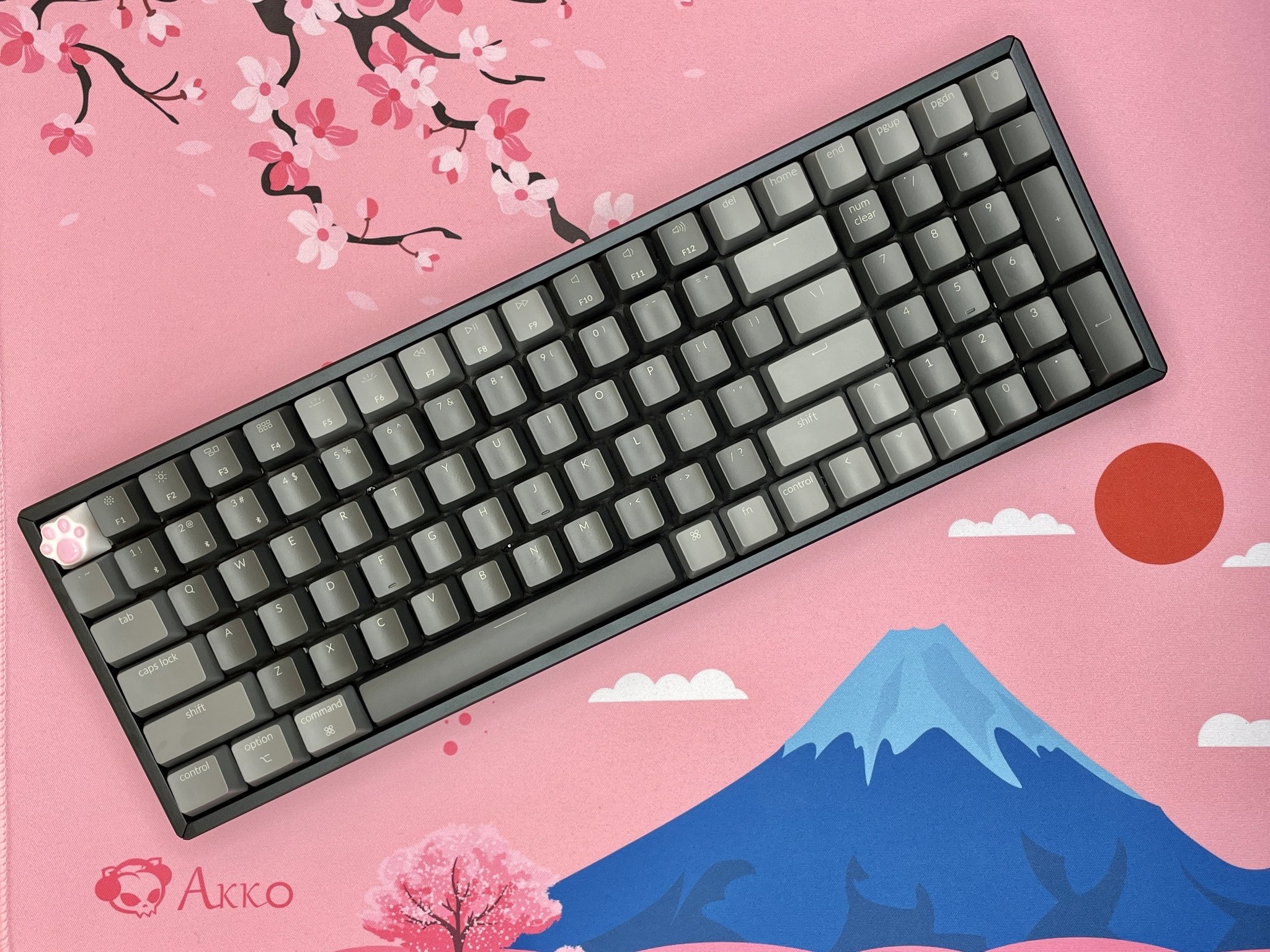






Christine Romero-Chan was formerly a Senior Editor for iMore. She has been writing about technology, specifically Apple, for over a decade at a variety of websites. She is currently part of the Digital Trends team, and has been using Apple’s smartphone since the original iPhone back in 2007. While her main speciality is the iPhone, she also covers Apple Watch, iPad, and Mac when needed.
When she isn’t writing about Apple, Christine can often be found at Disneyland in Anaheim, California, as she is a passholder and obsessed with all things Disney, especially Star Wars. Christine also enjoys coffee, food, photography, mechanical keyboards, and spending as much time with her new daughter as possible.


